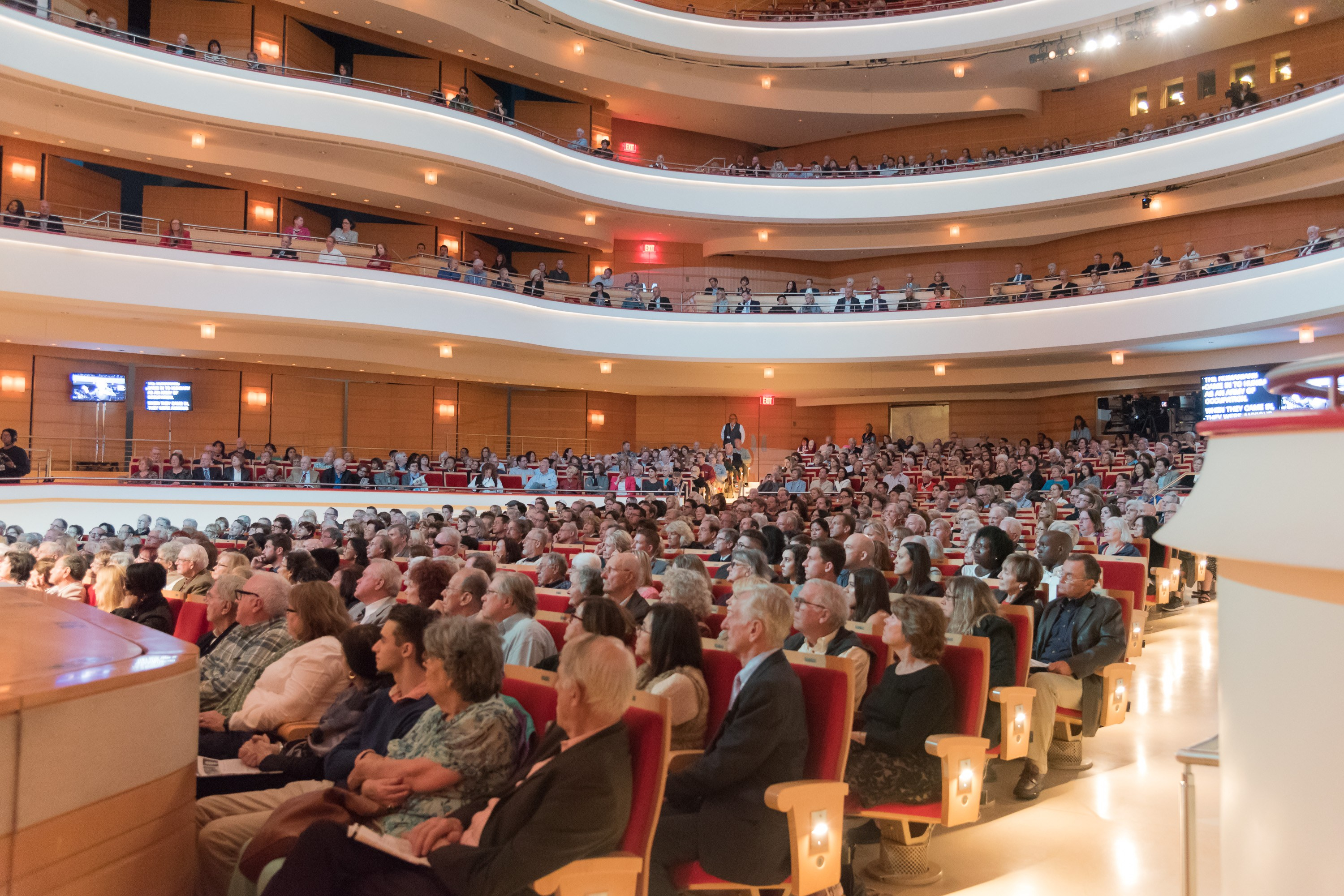 The problem of attending a classical music concert for a newcomer is a real one but is based essentially on a misunderstanding. The popular conception of classical concerts, perpetuated by Hollywood and others, as hoity-toity social affairs, bears little resemblance to reality, especially these days. Furs and monocles are optional.
The problem of attending a classical music concert for a newcomer is a real one but is based essentially on a misunderstanding. The popular conception of classical concerts, perpetuated by Hollywood and others, as hoity-toity social affairs, bears little resemblance to reality, especially these days. Furs and monocles are optional.
As it happens, what to wear is usually the first question that the classical neophyte feels he or she has to grapple with. The grappling is unnecessary. As in all areas of dress these days, the trend is toward more casual attire. A classical devotee is likely to see a wide range of fashion at most concerts, from T-shirts and jeans to suits and ties and stylish dresses. (Black tie and lavish gowns are reserved almost exclusively for the occasional gala.)
When I started out as a staff music critic at a newspaper, I would usually wear a suit and a tie to concerts. But what I soon found was that nine times out of 10, I was overdressed. These days the suits and ties generally remain in the closet; I’d rather not be noticed. If you are a classical newbie and would similarly like to blend in, then “casual dress” is the safest bet.
The next question that comes up is when to applaud. The answer is simple, but applying it is complicated. The proper moment to applaud is at the end of a piece. The problem with this dictum is that newcomers don’t know when the end of a piece is; they think it’s when the music stops. Which is not always, or even usually, the case.
A classical piece such as a symphony, concerto or string quartet typically consists of multiple movements. Each of these movements will have a beginning, middle and end, after which there is a pause before the next movement. This pause is neither the end of the piece nor the time to applaud.
It can get confusing. Beethoven’s Fifth Symphony, for example, has four movements, but the last two are connected by a musical bridge (it’s a great moment), so there is a silent pause only after the first and second movements, and then at the end. What’s more, the famous first movement ends vigorously and excitedly, seemingly inviting applause. (In fact, 19th-century audiences would have applauded here.) Warning: Do not applaud.
Not that it’s a huge deal. Audience members applaud at the wrong moment all the time. It’s not a mortal sin. But it can irritate the performers and it does irritate other concertgoers who like to feel superior because they know when to clap and you don’t.
So here’s the simplest rule to follow. Don’t clap unless and until everyone else is clapping. That means don’t clap when you hear a smattering of applause, because that smattering is the folks clapping at the wrong time.
There are exceptions to the wait-until-the-end-to-clap rule. At an opera, it is customary to clap after arias. (This resembles the rule at jazz concerts: Clap after improvised solos you like.) At a song recital, songs, often by different composers, are grouped together into sets – wait for the set to end.
Shouting bravo and booing (it happens) will come later. They are the property of connoisseurs. Wait until you get there. In theory, the standing ovation should be reserved for only the most exceptional performances, but in practice almost every classical concert ends in one and there’s not much you can do about it except gruffly refuse to stand, or, stand and join the fun.
There are certain rituals the musicians go through that may be puzzling. In this country, an orchestra seats itself onstage as it warms up, with one seat empty, that of the concertmaster. He or she is the first violinist and leader of the orchestra, with special duties. One of them is to tune the orchestra. And so, the orchestra will go quiet and the concertmaster enters to begin the tuning. He or she is welcomed by the audience with applause.
The conductor enters after that and is similarly welcomed. After the performance of a complete piece, the conductor bows and leaves the stage, re-enters if the applause continues, but ultimately is offstage between pieces. He or she enters to start the next piece and is welcomed with applause once again. It may seem silly at first but you don’t even think about it after you’ve been to several concerts.
It is best to sit relatively still while listening. Attending a classical concert is more like attending a movie than it is attending a rock concert. You don’t want to disturb the listening of others with movement, or talking, or texting, or dancing, or snapping photos or anything. Toe tapping is fine, but keep it to yourself. Air conducting is right out.
Reading the program, even if you don’t understand some of it, is a good idea, and will help you when you listen to the performance. Do it before the music starts. Reading the program during the performance isn’t against the rules, but it is poor form. Again, the music should be listened to with at least the same attention and mindfulness with which one watches a movie.
Classical concert etiquette is often thought of as impossibly snooty and stuffy, but that’s not really fair, I feel. Mostly, it’s necessary. Classical music, to be completely and fully understood and appreciated, must be listened to in a still and quiet environment. The regimented placement of applause, if you want to look at it that way, is perhaps debatable, but the current practice can certainly be defended on logical as well as artistic grounds.
And contrary to popular belief, classical concertgoers are there to have a good time. Most of us hardly care what you wear, and when you applaud is similarly of little concern. We’re there to listen to the music. But otherwise, the more the merrier. We’d rather have you join us than not.
–TIMOTHY MANGAN
